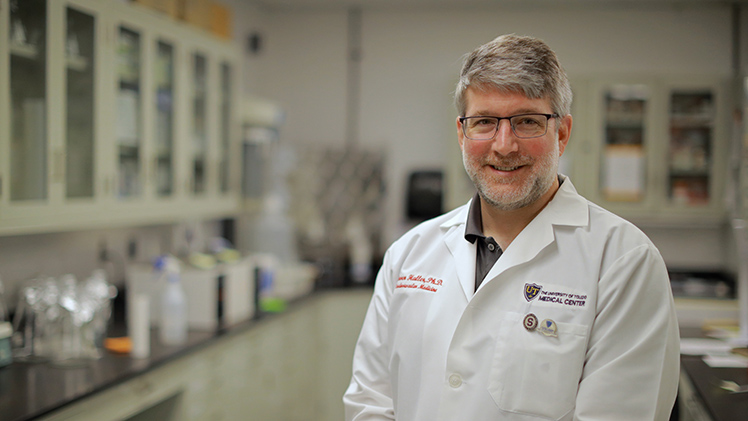The latest round of funding from the Ohio Department of Higher Education’s Harmful Algal Bloom Research Initiative includes $1.2 million for five new projects at The University of Toledo.
In total, the initiative is providing $5 million for 17 projects from seven Ohio public universities.

Dr. Steven Haller, associate professor in the Department of Medicine.
The Harmful Algal Bloom Research Initiative is co-led by UToledo and Ohio State University and is funded by the Ohio Department of Higher Education with matching funds from participating universities.
“I am proud of The University of Toledo’s partnership with the Ohio Sea Grant Program in the chancellor’s Harmful Algal Bloom Research Initiative,” said Dr. Frank Calzonetti, vice president for innovation and economic development. “Our strong participation in this program shows the value that our faculty bring to the understanding of the global problem of harmful algal blooms that calls for experts across a wide range of disciplines.”
The awards, which were announced last week, include projects aimed at mitigating harmful algal blooms, guiding wetland restoration, studying technologies for water treatment systems, evaluating the effect of climate change on nutrient runoff, and studying the health effects of cyanotoxins produced during harmful algal blooms.
“Governor DeWine’s leadership through the H2Ohio program provides real promise in our efforts to address water quality issues,” said ODHE Chancellor Mike Duffey. “I’m pleased that Ohio’s colleges and universities continue to conduct research to inform H2Ohio efforts and play a vital role in finding solutions to pressing Lake Erie issues. The Harmful Algal Bloom Research Initiative has been a collaborative problem-solving effort that uses our higher education assets to inform management decisions and to improve the quality of life for all Ohioans.”
The UToledo research projects are:
• “Use of High-Resolution Data Sets to Locate Sites for Restoration and Installation of Nutrient Interceptors in the Maumee Watershed,” led by Dr. Kevin Czajkowski, Distinguished University Professor in the Department of Geography and Planning;
• “Geophysical Mapping of Sub-Bottom Sediments, Groundwater Discharge Zones, and Bathymetry of Inundated Coastal Wetlands and Shallow Lakes,” led by Dr. Kennedy Doro, assistant professor in the Department of Environmental Sciences;
• “Aging as a Primary Risk Factor for Increased Susceptibility to Aerosolized Harmful Algal Bloom Toxins and Toxic Microplastics,” led by Dr. Steven Haller, associate professor in the Department of Medicine;
• “Characterization and Screening of Aerosolized Anatoxin-a, Guanitoxin, Cylindrospermopsins, and Saxitoxins in Vulnerable Populations,” also led by Haller; and
• “Diagnostic Test Development for Detection and Monitoring of Cyanotoxins in Human and Veterinary Applications,” led by Dr. David Kennedy, associate professor in the Department of Medicine.
Each project is funded for two years.
“Our projects funded by this program are responding to our desire to protect Lake Erie, our waterways, our drinking water and our health,” Calzonetti said.
To date, the Harmful Algal Bloom Research Initiative has made $24 million available since 2015. With matching funds from participating universities, the total research investment comes to more than $37 million.